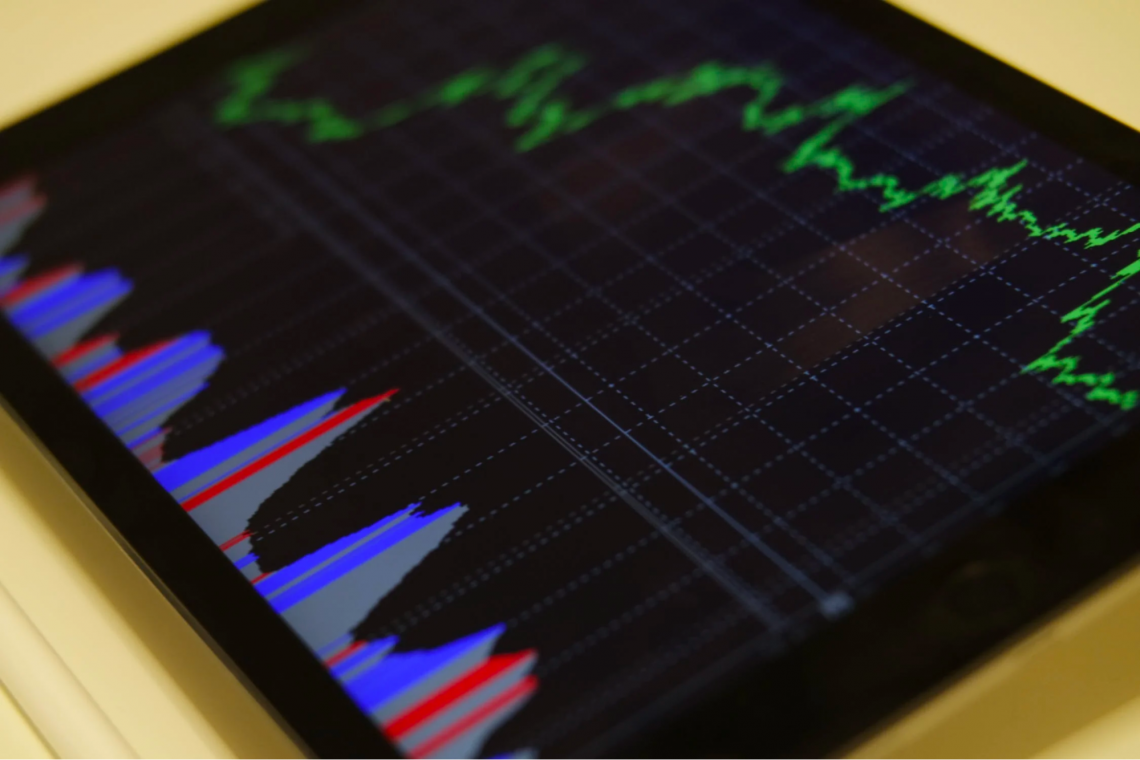Stock Market Index
A statistic compiled by a stock exchange or financial services institution that shows how the stock market has changed.
A stock market index is a statistic compiled by a stock exchange or financial services institution that shows how the stock market has changed. Investors can use this to test the result of their investment and forecast the underlying stock market's trend.

It is simple for investors to understand the price changes of a single stock, but it is hard to interpret the price changes of multiple stocks individually. Therefore, they combine various stocks into one easy-to-understand metric.
At the same time, the press, business leaders, and even political leaders utilize it as a benchmark for observing and forecasting social, political, and economic growth.
People frequently select several representative stocks listed on an exchange and compute the price average or index of these sample stocks. Because stock index calculation is complex, there are numerous types, each with its advantages and drawbacks.
Indices indicate the general trend and range of stock prices in the entire market.
Description
A stock market index is a number compiled by a stock exchange or financial services company that shows how the stock market has changed. Investors are inevitably exposed to market price risk due to the volatility of stock prices.
To react to these circumstances and demands, some financial institutions compile a stock price index and distribute it publicly as an indicator of market price fluctuations.
Investors can use this to test the impact of their investment and forecast a stock market's trend. At the same time, the press, business leaders, and even political leaders utilize it as a benchmark for observing and forecasting social, political, and economic growth.
The stock index displays how the stock market has changed throughout time.
An index for a certain period is usually based on the value from a specific month/year, taking the value at this base period as 100.
Sock prices are then compared in each subsequent period, with the price of the base period used to calculate the percentage increase/decrease.

Investors can use the rise and fall of an index to determine the pattern of stock price fluctuations. Almost all stock markets post stock index prices simultaneously as stock prices change to convey the stock market's movement to investors in real time.
Calculation of Stock Market Index

Three things should be considered while calculating the stock index
1. Sampling: Pick a small number of representative constituent stocks from a large number of stocks
2. Weighting: Calculate a weighted average by unit price or total value, or an unweighted average
3. Averaging: Calculate the arithmetic, geometric, or full-value mean.
Due to the enormous number of listed stocks, calculating the price average or index of all listed stocks is challenging and time-consuming.
As a result, people frequently select a sample of representative stocks from the listed stocks and determine the average price of these sample stocks. It shows the market's overall trend and price range.
When constructing a share price average or index, four factors are frequently considered:
-
The sample stocks must be representative and widespread. As a result, consider industry dispersion, market influence, stock grade, and other variables while choosing a sample.
-
The computation method should be adaptable, allowing it to make appropriate modifications or corrections in response to changing stock market conditions, improving the sensitivity of the stock index or average.
-
A scientific, mathematical base and means are required. The calculation basis's quality must be unified, and the closing price is usually used as the foundation. Some computations are based on the hourly price or even a shorter period as the calculation frequency increases.
-
A well-balanced and representative base period should be used.
Technique of Calculation
The stock index and the stock price average are frequently calculated when creating a stock index. A stock price average, by definition, is the average price of a stock.

The index price, on the other hand, is a generic level that reflects the price fluctuations of numerous stocks and is usually expressed as an arithmetic average in terms of their actual effects on the stock market.
Comparing the index price over time allows people to discern distinct levels of stock price movements.
The stock index is a relative indicator that reflects changes in stock prices over time, using the average stock price in one period as a baseline for the average stock price in another.
The percentage rate at which the stock price of the calculation period has risen or declined relative to the stock price of the base period can be seen with a stock index.
Due to the stock index being a relative indicator, it may assess changes in stock prices more accurately than the average stock price over a more extended period.
Dow Jones Industrial Average (DJIA)
The Dow Jones Industrial Average is the world's oldest stock index.
Charles Dow, the founder of Dow Jones & Company, created it in 1884. The base Dow Jones stock price average was derived using the average arithmetic method and reported in the Daily News, edited and published by Charles Dow himself.
The "Dow" has been separated into two critical sectors since 1897: industry and transportation. The transportation industry average contains 20 stocks, while the industrial average includes 12.
Utility stocks were added to the index in 1929, bringing the total number of stocks to 65.
This number is still maintained today. The current Dow Jones baseline was established on October 1, 1928. The closing value of the Dow Jones on that day equals 100.

Each period's index value will be determined as a stock price percentage compared to the base period. As a result, the current stock index is usually measured in points, and each point of the stock index rises or falls to the base day.
The basic arithmetic average method is the Dow Jones Industrial Average's initial computation method. As a result, the stock index will be discontinuous regarding the stock's ex-rights and ex-dividend dates.
After 1928, the Dow Jones stock price average adopted a new calculation method: the employment of connection technology in the ex-rights or ex-dividends dates of point-counted stocks helping to assure the stock index's continuity and accuracy.
S&P 500
Standard & Poor's stock price index, in addition to the Dow Jones Industrial Average, has a significant impact on the market. It is compiled by Standard & Poor's, the country's largest securities research firm.
In 1923, the firm began accumulating and releasing stock market indices. Two hundred thirty stocks were initially chosen, and two stock price indexes were created. By 1957, the index had grown to 500 equities divided into 95 combinations.
It was amended to 400 industrial equities, 20 transportation stocks, 40 utility stocks, and 40 financial stocks as of July 1, 1976. Despite adjustments over the years, the number of stocks has always stayed at 500.
The Standard & Poor's stock price index uses the average market price of the sampled stocks from 1942 to 1943 as the base period, the number of listed stocks as the weight, and is measured according to the base period, with a basis point of ten.

Nikkei 225
The Nihon Keizai Shimbun compiles and publishes an index that reflects the price changes of the Japanese stock market. Since September 1950, the index has been published.

The "Topix revised average stock price" was initially produced using the stocks of 225 companies listed on the Tokyo Stock Exchange's first market.
Nihon Keizai Shimbun obtained the trademark for the rectification technique from Dow Jones Company on May 1, 1975, and began computing it using the same method as Dow.
The "Nikkei Dow Jones Average Stock Price" was the initial name given to the index. However, after negotiations between the two companies, the name was changed to "Nikkei Stock Average" on May 1, 1985, when the ten-year contract expired.
As mentioned, it is calculated using the Dow's method with a total of 225 stocks, hence why it is sometimes referred to as the Nikkei 225.
All the equities are listed on the Tokyo Stock Exchange's First Market and will not be changed in principle after they have been chosen.
In 1981, the composition of Nikkei 225:
- 150 companies in the manufacturing industry:
- 10 in the construction industry
- 3 in the aquatic industry
- 3 in the mining industry
- 12 in the commercial industry
- 14 in the road and shipping industry
- 15 in the finance and insurance industry
- 3 in the real estate industry
- 4 in warehouse industry + electricity and gas
- 5 in the service industry.
Since the Nikkei 225's average stock price has been held since 1950, its consistency and comparability are excellent. As a result, it has become the most widely used and dependable indicator for examining and analyzing the Japanese stock market's long-term evolution and dynamics.
The Nikkei 500 is another type of index. It was compiled on January 4, 1982.
It is more representative because it covers 500 different stocks, but its sample is not fixed.
The sample will be adjusted based on the operating conditions of the listed companies, transaction volume and value, total market value, and other parameters in April of each year.
Researched and authored by Yiqing Qiao | LinkedIn
Free Resources
To continue learning and advancing your career, check out these additional helpful WSO resources:




or Want to Sign up with your social account?